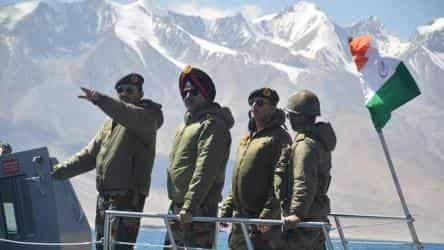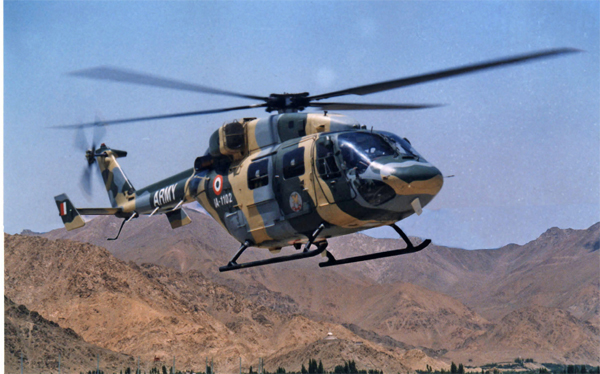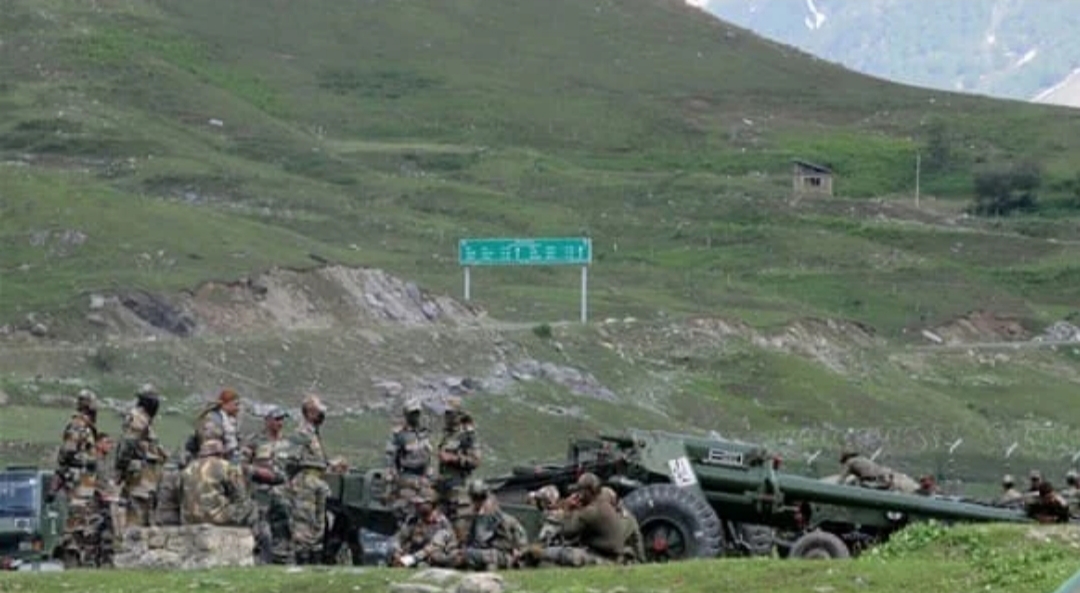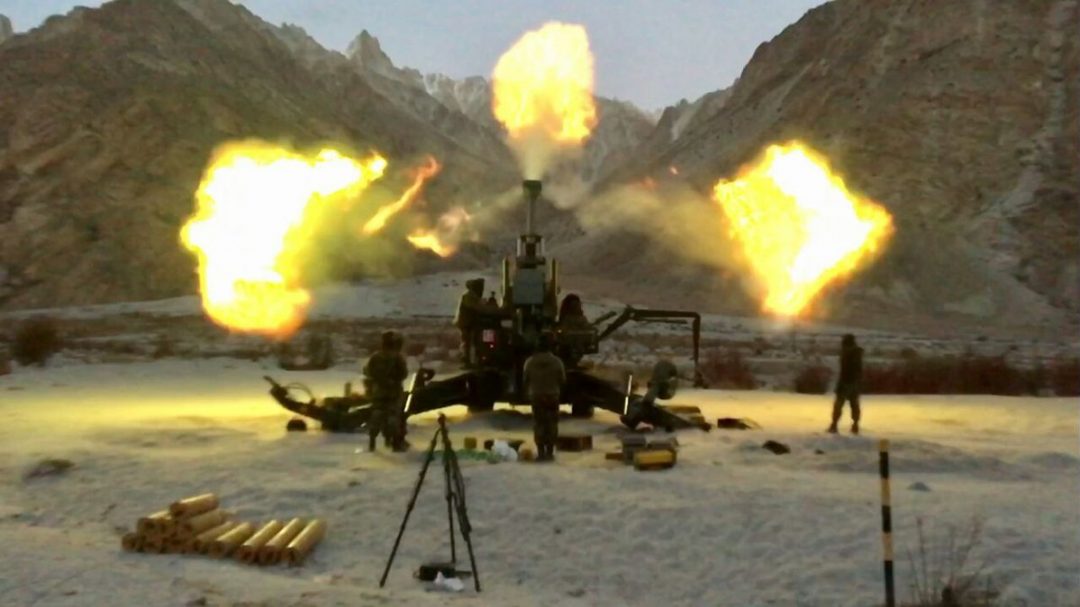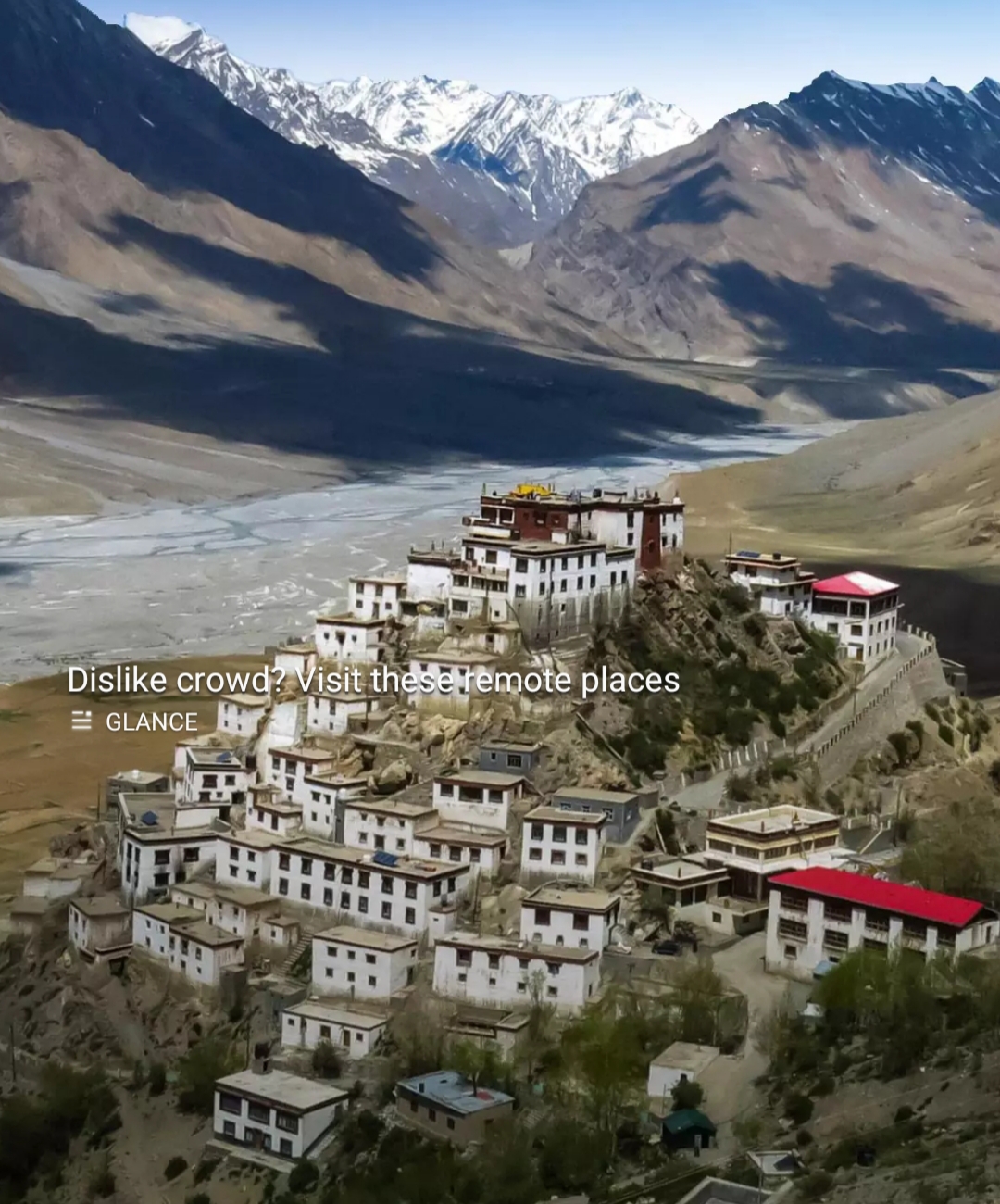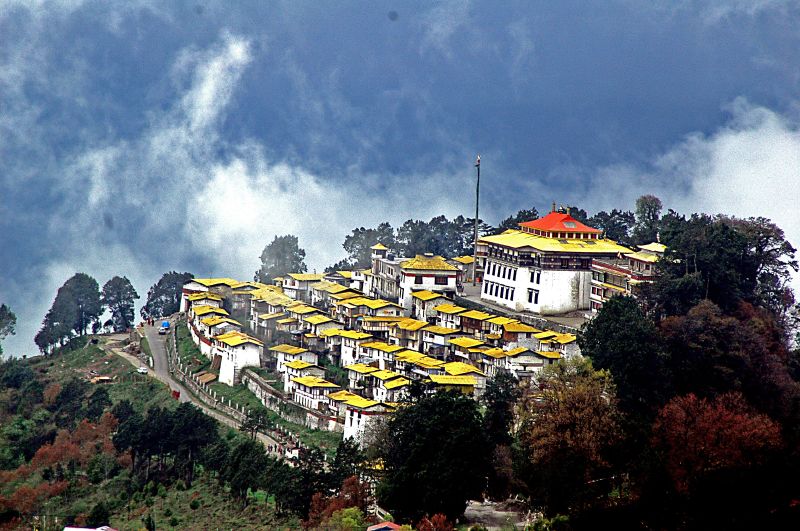Lt Gen YK Joshi, GOC Ladakh 14 Corps, along with then Northern Army commander Lt Gen Ranbir Singh on a boat patrol in Ladakh’s Panggong lake
Indian Navy is sending a dozen high-powered, bigger capacity and top of the line surveillance equipped steel boats to Ladakh so that the Indian Army can patrol Pangong Tso and match the heavier Type 928 B vessels of the Chinese Army lake fleet. The Pangong Tso lake is at the centre of People’s Liberation Army (PLA) aggression in East Ladakh with the Chinese bullying India into ceding territory on both the banks and deliberately pushing the Modi government into retaliatory mode.
While the third senior military commander level talks stretched late into Tuesday night at Chushul, the word out is that they were held in cordial atmosphere with both the Leh Corps Commander and his Xinjiang Military district counterpart discussing the specifics of de-escalation and dis-engagement along the 3488 km Line of Actual Control (LAC).
The decision to send steel hulled boats to Pangong Tso was taken by the tri-services this week with the Navy asked to transport the vessels through C-17 heavy lift transporters to Leh on a priority basis. Apart from signalling Indian intent to stand up strong to any Chinese provocation, the heavier vessels will not be pushed around in the water by PLA boat fleet. Even though there are some logistical issues in transporting the huge boats by plane, solutions are being worked out by both Indian Navy and Army.
The Indian Navy is forwardly deployed on its eastern and western seaboards with its naval fleets monitoring the movement of ships from Andamans Sea to Persian Gulf to prevent any untoward activity.
While ostensibly China is talking peace and disengagement in the East Ladakh, it is quite evident to Indian national security planners that the PLA is actually consolidating on the four stand-off points along the 1597 KM LAC in the western sector. The amassing of troops in the Galwan sector, the building of road at Gogra point, the upgradations of communications at Hot Springs and the massive infra push at the Pangong Tso all shows that the PLA has no intentions to restore status quo ante. Instead, the PLA is hell-bent on provoking Indian Army by trying to nibble more territory and force an escalation on the border.
The Modi government has given Indian military a free hand to deal with the situation on the border as China has decided to turn the difference on the LAC into permanent dispute. The Indian troops and air force are all standing up to the PLA but will not initiate escalation on their own but only responds to the Chinese aggression. Just like 2001 Operation Parakram, Indian Forces are prepared to wait till such time status quo ante is restored in East Ladakh.
Even as the world, particularly the US and Russia, are waking up to new Chinese aggression, the Middle kingdom has always been a civilizational concept with Beijing rulers in the past two centuries. In this concept the only refined society is China with the rest of world being barbarians or tributary states. By contesting sovereignty of Senkaku islands with Japan, contesting Taiwan security with US, contesting South China Sea with ASEAN and forcing India into a military stand-off in Ladakh, China is cocking a snook at the globe.

